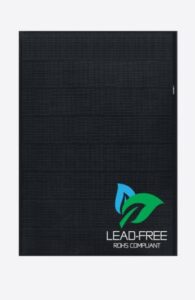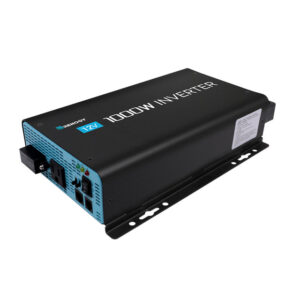
Key Takeaways
-
Blue Wave is a pre-wired, modular energy storage solution for tiny homes, installable in under an hour.
-
The system can be scaled from 3 kWh to 48 kWh to meet various energy needs.
-
Blue Wave features advanced Lithium Ferrous Phosphate (LFP) battery technology for safety and longevity.
-
Installation is simplified with neuClick technology, making it accessible to homeowners.
-
The system offers both AC/DC inverter options and can be monitored for performance and energy usage.
Living in a tiny home doesn’t mean you have to compromise on modern conveniences or your commitment to a sustainable lifestyle. With the advent of off-grid energy solutions like the Blue Wave home battery system, you can power your tiny home with renewable energy, reduce your carbon footprint, and live independently from the traditional power grid. Let’s dive into why Blue Wave is making waves in the world of tiny homes.

Harnessing the Tide: Why Blue Wave Powers Tiny Homes
Blue Wave stands out from the crowd because it is designed with the unique needs of tiny homes in mind. Its compact, modular design is perfect for small spaces, ensuring that your cozy home doesn’t need to make room for bulky energy systems. Besides that, the all-in-one nature of Blue Wave means that you get everything you need in one package, streamlining both installation and operation.

Compact, Modular Design
Space is a premium in tiny homes, and that’s where Blue Wave’s compact design shines. The system’s modularity means that it can fit into the nooks and crannies of your home without taking up valuable living space. And because it’s modular, it grows with you. Start with what you need, and expand as your energy needs increase – without any major overhauls to your living space.

All-In-One Energy System
When we talk about an all-in-one system, we’re talking about a solution that includes batteries, an inverter, and a management system all in one unit. This integration means less hassle for you during installation and less time spent on maintenance. It’s a plug-and-play solution that’s ready to go right out of the box.
The Heart of Blue Wave: Components and Functions
The Blue Wave system is more than just a battery – it’s a comprehensive energy solution. At its core, it features a battery management system that ensures your energy is stored safely and efficiently, an inverter that converts stored energy into usable power for your home, and a communication panel that keeps you informed about your system’s performance.
Effortless Plug-and-Play Installation
Installation is a breeze with Blue Wave’s innovative neuClick technology. You won’t need an army of technicians or a week of work to get your system up and running. In fact, a single technician can have it installed in less than two hours. That means less downtime for your home and less labor cost for your wallet.
Advanced Battery Technology
Blue Wave harnesses the power of Lithium Ferrous Phosphate (LFP) batteries, known for their safety and longevity. Unlike other lithium-ion batteries, LFP batteries are more stable and less prone to overheating, which means they’re a safer choice for the close quarters of a tiny home.

System Scalability and Expansion
Your energy needs today might not be the same as tomorrow. That’s why Blue Wave’s system is designed to be scalable. With modular components that can provide energy storage capacities ranging from 3 kWh to 48 kWh, you can start small and expand your system as your needs grow – all without any major reconfigurations.
Real-World Applications: Blue Wave in Action
It’s one thing to talk about the potential of an off-grid energy solution, but it’s another to see it in action. Blue Wave systems are already powering tiny homes across diverse locations, providing a reliable and sustainable source of energy to those who value independence and eco-friendliness.
Case Study: A Tiny Home Transformation
Take the case of Emily and Jack, who live in a 250-square-foot tiny home in rural Vermont. They chose a Blue Wave system with a 9 kWh capacity to power their home. The installation process was quick, and they were able to enjoy the benefits of their new system almost immediately. With Blue Wave, they can now live completely off-grid, using solar panels to charge their batteries during the day and drawing from the stored energy at night.
“We wanted to reduce our carbon footprint and live more sustainably. The Blue Wave system has allowed us to do just that. It’s reliable, efficient, and fits perfectly in our tiny home,” says Emily.
Not only did the system fit their environmental goals, but it also provided them with the peace of mind that comes from energy independence.
Adapting to Varied Energy Needs
Blue Wave’s adaptability is a significant advantage for tiny home dwellers. Whether you’re using energy-intensive appliances or you’re a tech-savvy couple with multiple devices, the system can be tailored to meet your specific energy demands. This flexibility ensures that you won’t be left in the dark when you need power the most.

Getting Started with Blue Wave
If you’re considering Blue Wave for your tiny home, the first step is to assess your energy needs. This will determine the size of the system you’ll need and help you plan for the installation.
Assessing Your Energy Needs
Start by making a list of all the electrical devices you use in your home, noting their power ratings and how often you use them. This will give you an idea of your daily energy consumption. Remember to factor in seasonal variations—your energy use in summer might be different from winter.
Next, consider how much energy you can generate. If you’re using solar panels, for instance, you’ll need to know the average sunlight hours in your area and the wattage of your panels. This will help you calculate how much energy you can expect to produce and store.
Planning and Preparation for Installation
Before you purchase a Blue Wave system, you’ll need to prepare your home for installation. This might include finding a suitable location for the battery and inverter, ensuring that your roof can support solar panels if you’re using them, and checking that your home’s wiring is up to standard.

Step-by-Step Installation Guide
Installing a Blue Wave system is straightforward, but it’s always best to work with a certified technician. Here’s what you can expect:
-
Choose the location for your battery and inverter, ideally close to your power source (like solar panels).
-
Mount the battery and inverter using the provided brackets.
-
Connect the battery to the inverter and then to your home’s power system.
-
Configure the system settings according to your energy needs and preferences.
Once installed, you’ll be ready to enjoy the benefits of off-grid power with minimal maintenance required.
Blue Wave Specifications
|
Battery capacity |
3kWh – 12kWh |
|---|---|
|
How many BlueWaves can I install? |
Up to three units for a total battery capacity of 48kWh |
|
Inverter capacity |
3.3kW – 13.2kW |
|
Continuous power output |
1.65kW – 13.2kW |
|
Round-trip efficiency |
90% |
|
Depth of discharge |
100% |
|
AC or DC-coupled? |
Options for both |
|
Battery chemistry |
Lithium ferrous phosphate |
|
Warranty |
10 years (can be extended to 15 years) |
|
Indoor and outdoor rated? |
Yes |
The Green Beneath the Blue: Sustainability and Savings
Choosing an off-grid energy solution like Blue Wave isn’t just good for the planet; it’s also good for your wallet. While there’s an upfront cost to purchasing and installing the system, the long-term savings on utility bills can be significant. Additionally, many regions offer incentives for renewable energy systems, which can further offset the initial investment.
Environmentally, the impact is clear. By using renewable energy, you’re reducing reliance on fossil fuels and contributing to a cleaner, more sustainable future. With a Blue Wave system, your tiny home becomes a beacon of modern, eco-conscious living.

Environmental Impact and Footprint
The environmental benefits of using an off-grid system like Blue Wave are extensive. By relying on renewable energy sources such as solar or wind power, tiny home owners can significantly reduce their carbon emissions. The Blue Wave system is particularly eco-friendly due to its LFP batteries, which are non-toxic and have a longer lifecycle compared to other battery types. This means less waste and a smaller environmental footprint over the life of the system.
FAQ
Is Blue Wave suited for all climates?
Blue Wave’s robust design makes it suitable for a variety of climates. The LFP batteries perform well in both high and low temperatures, maintaining efficiency and longevity. However, it’s important to note that extreme conditions may affect the performance of any battery system. In colder regions, for instance, additional insulation might be necessary to protect the system from severe cold.
How does Blue Wave handle peak energy demand?
Blue Wave systems are designed to handle peak energy demands smoothly. The scalable nature of the system allows users to increase their storage capacity to ensure they have enough power during high usage periods. Additionally, the advanced battery management system helps to optimize energy distribution, ensuring that your home receives a consistent power supply when you need it most.
Can the Blue Wave system be monitored remotely?
Yes, the Blue Wave system includes a communication panel that allows for remote monitoring. Homeowners can access real-time data on their energy usage, battery state of charge, and system health via a user-friendly interface. This feature not only provides peace of mind but also helps in making informed decisions about energy consumption and conservation.
What is the expected lifespan of a Blue Wave system?
Blue Wave systems are built to last. The LFP batteries used in Blue Wave have a lifespan of up to 10 years or more, depending on usage patterns. With proper maintenance and care, the system components can last even longer, making it a worthwhile investment for any tiny home owner looking for a reliable and durable off-grid energy solution.
Are there any government incentives for using Blue Wave?
Many governments offer incentives for installing renewable energy systems, including tax credits, rebates, and grants. The specific incentives available for a Blue Wave system will depend on your location and the current policies in place. It’s advisable to research local programs and consult with a tax professional to understand the benefits you may be eligible for.
In conclusion, the Blue Wave home battery system represents a leap forward in off-grid energy solutions for tiny homes. Its compact, modular design, coupled with advanced battery technology and scalability, makes it an attractive option for those seeking to live sustainably without sacrificing comfort or convenience. By choosing Blue Wave, tiny home owners can enjoy the benefits of renewable energy, contribute to a cleaner environment, and achieve energy independence. Whether you’re a current or prospective tiny home dweller, Blue Wave is a solution that promises to empower your lifestyle and elevate your commitment to the planet.



